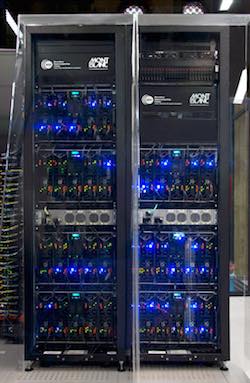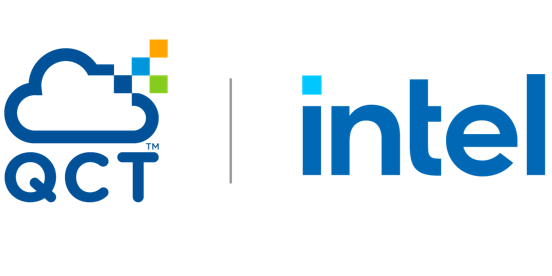 In this video, researchers from the Barcelona Supercomputing Center describe the Mont-Blanc prototype, an ARM-based HPC platform.
In this video, researchers from the Barcelona Supercomputing Center describe the Mont-Blanc prototype, an ARM-based HPC platform.
Early in February, Barcelona Supercomputing Center (BSC) successfully deployed the Mont-Blanc prototype. After three years of intensive research effort, the team installed a two-rack prototype which is now available to the Mont-Blanc consortium partners. This has been a formidable challenge as this is the first time that a large HPC system based on mobile embedded technology has been deployed and made fully operational to a scientific community composed of scientists of six of the most important research centers in Europe.
Installed in the Torre Girona chapel, the Mont-Blanc prototype is made up of a total of two racks containing 8 standard BullX chassis, 72 compute blades fitting 1080 compute cards, for a total of 2160 CPUs and 1080 GPUs. The heterogeneous architecture of the Mont-Blanc prototype takes advantage of computing elements (CPUs and GPUs) developed by ARM and integrated by BULL under the design guidance of all Mont-Blanc partners.
After the installation of the prototype the next steps will be an intensive evaluation of the scientific applications in terms of their performance and scalability, measuring power consumption under different types of workloads and opening up access to industries interested in testing it”, says Filippo Mantovani, coordinator of the Mont-Blanc project.
The Mont-Blanc partners and industrial members of the End User Group will now take full advantage of this hardware. The Mont-Blanc prototype offers the same application development and tuning environment that is available on a standard supercomputer, with an extensive and stable software ecosystem developed by the partners, including software support for embedded hardware components, scientific libraries, debugging and performance analysis tools, and support for the most used programming languages and parallel programming models. Besides the standard use, the users can take advantage of an advanced power monitoring tool that allows researchers to monitor the power consumption of applications. This is a fundamental tool in order to carefully measure the power efficiency of the prototype.
Now the challenge starts”, says Filippo Mantovani, “because with this platform we can foresee how inexpensive technologies from the mobile market can be leveraged for traditional scientific high-performance workloads at a much lower total cost of ownership than state-of-the art supercomputers.”
The work of the Mont-Blanc project will continue and the team will focus their efforts on developing the OmpSs parallel programming model further to automatically exploit multiple cluster nodes, transparent application checkpointing and application-based techniques for fault tolerance, support for ARMv8 64-bit processors and the initial study of the Mont-Blanc Exascale architecture.
It is important to remember that this is all possible thanks to the synergy amongst the industrial and academic partners that joined together in order to address technological and multidisciplinary scientific challenges with the support of the European Commission” says Dr. Mantovani.



